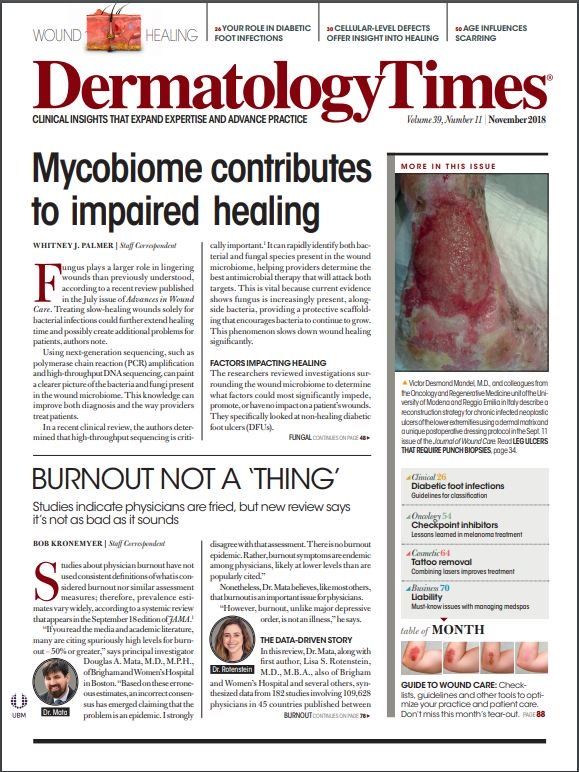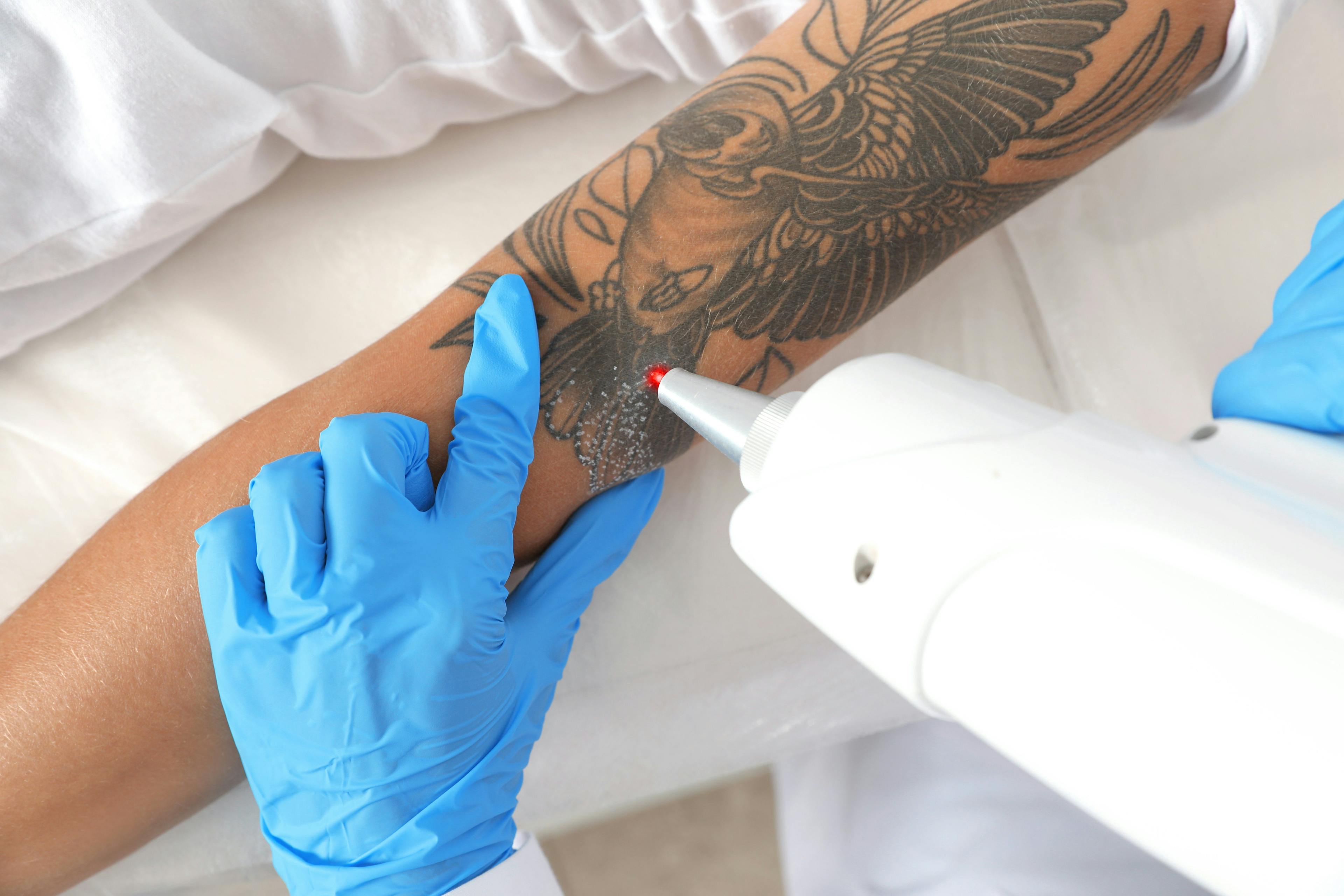- Acne
- Actinic Keratosis
- Aesthetics
- Alopecia
- Atopic Dermatitis
- Buy-and-Bill
- COVID-19
- Case-Based Roundtable
- Chronic Hand Eczema
- Chronic Spontaneous Urticaria
- Drug Watch
- Eczema
- General Dermatology
- Hidradenitis Suppurativa
- Melasma
- NP and PA
- Pediatric Dermatology
- Pigmentary Disorders
- Practice Management
- Precision Medicine and Biologics
- Prurigo Nodularis
- Psoriasis
- Psoriatic Arthritis
- Rare Disease
- Rosacea
- Skin Cancer
- Vitiligo
- Wound Care
Publication
Article
Dermatology Times
Topical sirolimus shows positive results in two studies
Author(s):
Topical sirolimus may provide a less-invasive treatment option for patients with angiofibroma, according to recent studies.
Topical sirolimus may offer a new treatment option for angiofibroma, a benign tumor most often appearing first during childhood. It is associated with tuberous sclerosis complex (TSC) in children. Angiofibromas can become more aggressive and more confluent as people get older. In some patients, it can be disfiguring. Current treatments include laser surgery, cryotherapy, dermabrasion, which, in addition to being painful and causing scarring, don’t prevent recurrence of lesions.
A recent large study led by researchers at The University of Texas Health Science Center at Houston, and published in the July issue of JAMA Dermatology, showed that 1% topical rapamycin appears effective and safe for treatment of TSC-related facial angiofibromas.
A smaller study published in the same issue of JAMA Dermatology by reseachers at Osaka University in Japan supports this study. Randomized 1:1 to treatment with 0.2% sirolimus gel or placebo, 62 children and adults with angiofibromas were instructed to apply 400mg, 600mg or 800mg per label twice daily for 12 weeks The authors found that 0.2% sirolimus gel was clinically beneficial for treating TSC-related facial angiofibromas.
A consideration in the use of 1% topical sirolimus for angiofibromas is the likely need for long-term uninterrupted treatment, according to Thomas N. Darling, M.D., Ph.D., who authored an editorial that accompanied the rapamycin study. A study by Malissen et al (J Am Acad Dermatol 2017;77:464-72) showing that reducing the frequency of use to three times weekly did not prevent relapses of facial angiofibromas after success was achieved with daily application, he noted.
Another consideration is when to initiate therapy; some reports suggest greater efficacy with treatment at early stages of tumor formation.
While short-term studies suggest a low potential for adverse events, long-term studies are needed to better define the adverse event profile; although, “results from long-term oral administration in TSC and in transplant recipients provide some reassurance,” Dr. Darling wrote. Finally, the optimal topical formulation (ointment, gel, solution) needs to be defined, and whether or not surgery for thicker lesions before starting sirolimus would enhance efficacy should be determined, he wrote.
RAPAMYCIN STUDY
In the rapamycin study, 179 patients were randomized into one of three arms: a vehicle-only control, topical rapamycin 0.1%, or topical rapamycin 1%. The treatment or vehicle was applied nightly for six months.
The group randomized to 1% rapamycin had a mean improvement of 16.7 points from baseline to visit seven on the AGS, which was statistically superior (overall and at every study visit) to the mean 2.1-point improvement in the patients randomized to vehicle only (P<0.001). Patients randomized to 0.1% rapamycin had a mean 11.0-point improvement on the AGS at visit seven, which was statistically superior to vehicle only overall (P=0.01), and at every individual visit except visit 2 (P=0.07). Use of 1% rapamycin was visually superior to 0.1% rapamycin but not statistically significantly superior.
The end-of-trial photo was rated better than the baseline photo in the 1% rapamycin group for 81.8% of patients compared with 65.5% in the 0.1% rapamycin group and 25.5% in the vehicle-only group.
“Over time, the lesions began shrinking and regions of the face became clearer. One of the things that we would like to see is whether the oral therapy in combination with the topical could produce further improved outcomes. We also think that further studies are needed to define the optimal dose or the optimal concentration. As we only used two concentrations we don’t know if perhaps 2% would be even better or maybe 0.5% would be enough,” said Mary Kay Koenig, Ph.D., department of pediatrics, The University of Texas Health Science Center at Houston.
MORE TO EXPLORE
Mary Kay Koenig, MD; Cynthia S. Bell, MS; Adelaide A. Hebert, MD; et al. “Efficacy and Safety of Topical Rapamycin in Patients with Facial Angiofibromas Secondary to Tuberous Sclerosis Complex. The TREATMENT Randomized Clinical Trial,” JAMA Dermatology. July 2018. DOI:10.1001/jamadermatol.2018.0464
Mari Wataya-Kaneda, MD, PhD; Yuuki Ohno, MD; Yasuyuki Fujita, MD, PhD; et al. “Sirolimus Gel Treatment vs Placebo for Facial Angiofibromas in Patients with Tuberous Sclerosis Complex. A Randomized Clinical Trial,” JAMA Dermatology. July 2018.
DOI:10.1001/jamadermatol.2018.1408
Thomas N. Darling, M.D., Ph.D. “Topical Sirolimus to Treat Tuberous Sclerosis Complex (TSC),” JAMA Dermatology. July 2018.
DOI:10.1001/jamadermatol.2018.0465

Newsletter
Like what you’re reading? Subscribe to Dermatology Times for weekly updates on therapies, innovations, and real-world practice tips.
























